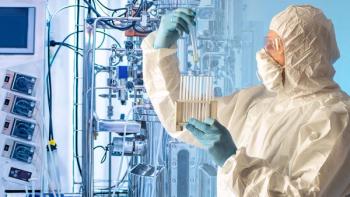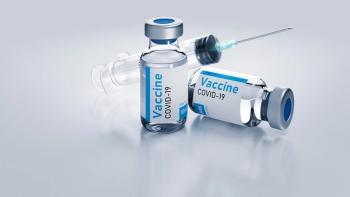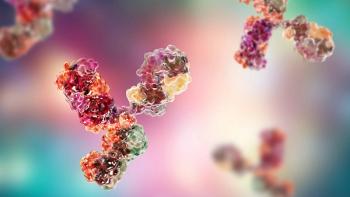
- BioPharm International-08-01-2013
- Volume 26
- Issue 8
Bioprocessing Advances in Vaccine Manufacture
Advances in techniques and single-use systems are revolutionizing vaccine manufacturing.
The vaccine industry, particularly, in major Western markets, continues to be dominated by a few major, long-established players that primarily manufacture aging, long-marketed, non-recombinant (nongenetically engineered) vaccines. The industry, however, will be changing in the coming years and this change may come rather rapidly. According to BioPlan's recently released analysis of 10-year industry trends (1), a confluence of technological advances in bioprocessing is making vaccine manufacture cheaper, faster, and simpler. These advances include:
- Single-use systems (SUS)/disposable bioprocessing systems
- Modular/transportable bioprocessing facilities
- Novel expression systems/improved cell lines
- New purification technologies.
Ronald A. Rader
As these technologies advance and are increasingly adopted for commercial-scale manufacturing, the industry will see an evolution in vaccine manufacture. Significant improvements are now commonly being reported as companies develop, adopt, and adapt bioprocessing technologies to vaccine manufacture.
Eric Langer
Single-Use Adoption
BioPlan's 10th Annual Report documents increasing adoption of these technologies and their impact on biopharmaceutical manufacturers. Survey data show that bioprocessing at pre-commercial scales, such as manufacture for clinical trials, is now thoroughly dominated by SUS (i.e., disposables) use. This increase included 78% of those surveyed reporting current use of SUS bioreactors and 92% using SUS filter cartridges at some level in bioprocessing (see Figure 1).
Figure 1: Selected single-use applications in biomanufacturing. (ALL FIGURES COURTESY OF AUTHORS)
SUS have moved into large-scale vaccines manufacture more slowly, partly due to the demands for large-scale equipment. In the BioPlan study, vendors were asked if they provide sufficiently scalable single-use disposables and techniques. Overall, 53% of the industry considers scale to be a significant adoption restriction. And vaccines manufacturers place inability to scale up SUS devices high on the list of concerns. SUS involve one-time use of bioprocessing equipment composed of plastics, not traditional stainless steel. SUS allow flexible manufacture when, and at the scale needed, with substantial reductions in costs and time, including presterilized equipment. In contrast, stainless-steel bioreactor-anchored facilities require costly and complex infrastructure, which further includes complex piping, including steam used for sterilizing stainless-steel equipment so it may be reused, which adds weeks to batch turnaround time.
Currently, SUS bioreactors top out at 2000 L, with many engineering challenges (e.g., weight) when larger. Where this does not provide sufficient manufacturing capacity, multiple parallel SUS process lines can be implemented. With advancing SUS technology, better plastics and new designs are being developed using SUS (vs. stainless steel) for their application in precommercial R&D, clinical-trial-material supply, and commercial manufacture. This use of SUS is projected to result in the market (primarily US and EU) for SUS equipment at a commercial scale growing 1000% in five years to $1.5 billion/year (2).
Going Modular
Going modular is the next advancement in bioprocessing hardware. It is closely related to the adoption of SUS technologies and involves housing SUS bioprocessing equipment within their own cleanroom cabinets—whether portable prefabricated trailers or equipment sealed within dedicated isolator cabinets—with these increasingly designed for plug-and-play simplicity. Bioprocessing facilities that formerly required years for planning and construction can be brought on line in a matter of months or even weeks. SUS have become common in less than a decade, in as short as 5 or 10 years; however, we may comparably be talking about industry widespread adoption of flexible bioprocessing modules and plug-and-play factories. Vaccines are expected to be one of the first product sectors affected by this trend. Modular technology will accelerate worldwide proliferation of vaccine manufacturing, including transfer of bioprocessing to lesser-developed countries. Even easier than with SUS process lines, modular systems allow whole plants to be essentially cloned, potentially allowing cGMP manufacture in many developing countries. Many foreign countries are and can be expected to demand local vaccine manufacture, particularly once modular facilities become commonplace, and equipment vendors plan to actively pursue this market.
Companies developing modular systems for vaccine manufacture include G-Con, which is working with partners, including Sartorius Stedim Biotech and GE/Xcellerex. For example, Project GreenVax, a private–public consortium, is currently constructing an influenza vaccine manufacturing facility (to be operated by G-Con, developer of the modular units being used) in Texas for manufacture of recombinant tobacco plant-expressed influenza vaccines, with a projected final scale capacity of 100 million doses per month [1.2 billion doses/year], according to company projections and production costs of pennies/dose compared with conventional dollars/dose for conventional egg-culture manufacturing. The Project Greenvax influenza vaccine-manufacturing facility, subsidized by biodefense funding, uses single-use equipment, housed within plug-and-play-type modular trailers, using tobacco plant expression technology. Medicago and other companies are also developing vaccines using tobacco-plant expression.
Expression Systems
Improved versions of currently-predominate expression systems (i.e., genetically-engineered cell lines such as Chinese hamster ovary [CHO], yeast, and E. coli) for recombinant protein expression are further making vaccine manufacture easier and cost-effective and reducing the scale and investment required to manufacture products. The BioPlan annual survey of bioprocessing professionals and other studies show a rather consistent doubling of mammalian-cell protein expression and product yield about every five years, with yields now typically in the upper 2-3 g/L (bioreactor volume) range. Newer expression systems coming on line promise even higher yields and/or cost-effectiveness, with yields of more than 30 g/L being reported. These upcoming systems include plants (both laboratory-grown and field-grown), such as from iBio (Newark, DE); transgenic animals; PER.C6 and other novel high-yield human-cell lines; and various bacteria other than the usual E. coli. Using the same manufacturing systems and culture media, these new systems produce the same amount of product at commensurately lower cost and often much faster. This higher yield has lead to US biodefense programs providing R&D support for diverse vaccine-expression systems.
Thus, the same equipment can essentially be used to manufacture twice as much product as what was possible only about five years ago. These improvements, however, come amidst intense regulation as major changes in products' bioprocessing are only implemented for new bioprocesses/products as they are developed with established processes rarely undergoing major changes. Upcoming new bioreactor technologies will further increase vaccine-manufacturing flexibility and reduce costs. This includes perfusion. Capillary hollow-fiber perfusion bioreactors being developed by FiberCell Systems, for example, are expected to comparably produce up to 1000 x (based on bioreactor size) the output from conventional bioreactor (e.g., a 50-L desktop perfusion bioreactor matching the overall output of a 5000-L bioreactor).
Purification Technologies
Novel purification technologies are also in development. These improvements are much needed, as advances in upstream manufacturing (everything through product formation in the bioreactor) causing capacity constraints and problems, because later downstream processing, primarily purification, have not advanced as rapidly as expression systems, and other upstream technologies have. The BioPlan study shows that many facilities are considering upgrading (i.e., adopting, new purification technologies). This trend includes 54% considering high-capacity chromatography resins; 44%, single-use filters; 38%, automated buffer dilution systems; and 35%, single-use tangential flow filtration.Other advances being adapted for large-scale use include simulated moving bed chromatography systems and membrane filters, which are starting to replace chromatography columns. Cast-in-place "monolithic" chromatography media, rather than labor-intensive packing of columns, are yet another example of improvements approaching adoption for commercial-scale manufacture.
Looking Ahead
Further practical advances and synergies can be expected when these technological advances are combined, thereby resulting in simpler, cheaper, and transportable vaccine manufacturing. A number of other vaccines currently in the development pipeline are being manufactured in SUS, are being developed for manufacturing using modular units, are using novel, higher-yield expression systems, and/or are adopting newer purification technologies. Besides federal biodefense programs funding, many of these efforts are independently funded or also being funded by PATH and other vaccine development-oriented philanthropic organizations.
The confluence and combination of ongoing bioprocessing technological advances will increasingly enable manufacture of vaccines quicker, simpler, and at significantly-reduced costs, often just pennies/dose, with many future vaccines likely to be sold at prices that are comparable or even below current manufacturing costs.
Ronald A. Rader is senior director, Technical Research, at BioPlan Associates. Eric Langer is president of BioPlan Associates, tel. 301.921.5979,
REFERENCE
1. BioPlan Associates, 10th Annual Report and Survey of Biopharmaceutical Manufacturing Capacity and Production (Rockville, MD USA, April 2013),
Articles in this issue
over 12 years ago
Navigating Emerging Markets: South Koreaover 12 years ago
New Gene Patent Rulesover 12 years ago
Filling a Drug Safety Gapover 12 years ago
Process Lifecycle Validation: Applying Risk Managementover 12 years ago
Applying Continuous-Flow Pasteurization and Sterilization Processesover 12 years ago
Seeking Harmonization in Nanomedicines Regulatory Frameworkover 12 years ago
Pharma Invests in Gene Therapy Programsover 12 years ago
Making Connections: The Crucial Junctions in Single-use Systemsover 12 years ago
India Braces for New Drug Pricing Policyover 12 years ago
Generic Drugs Face Regulatory and Scientific ChallengesNewsletter
Stay at the forefront of biopharmaceutical innovation—subscribe to BioPharm International for expert insights on drug development, manufacturing, compliance, and more.





